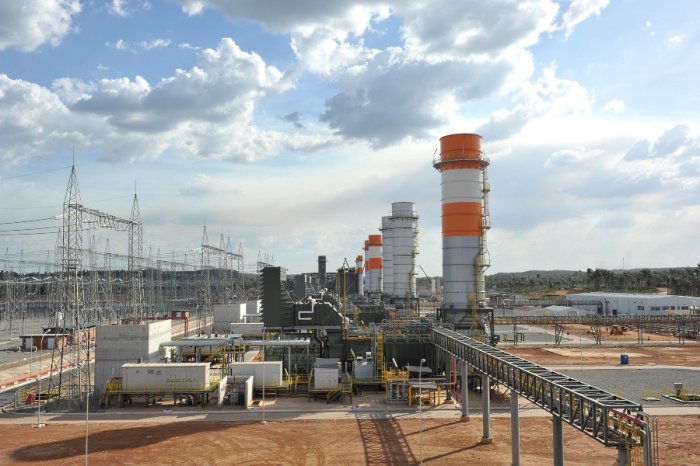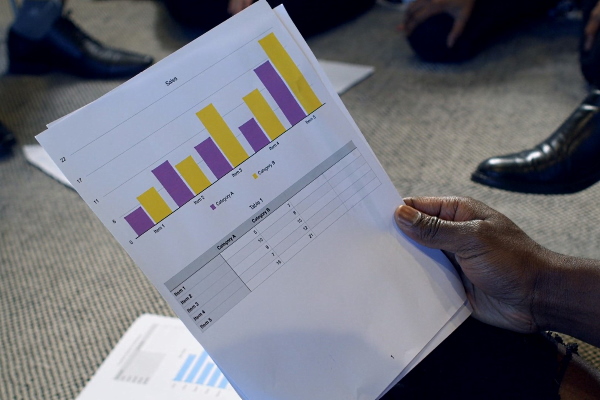To consider an application for financing, fill out the form and send it to us by e-mail along with the project brief, or contact our experts
Our professional team develops tailor-made project finance solutions to support the implementation of multi-billion dollar investment projects with a 10% contribution of the initiating company.
LBFL finances projects in the following areas:
• Heavy industry.
• Mechanical engineering.
• Energy, including renewable sources.
• Extraction and processing of ore and minerals.
• Oil and gas industry, including the LNG industry.
• Recycling of hazardous chemical waste.
• Infrastructure and logistics.
• Agriculture.
• Real estate.
• Tourism, etc.
We carefully study each investment project, developing the optimal financial model for long-term financing of your business.
It is enough for the initiators of the project to purchase a land plot, obtain a permit for the construction of a facility.
Thereafter, our international partners will ensure sufficient financial flows required for research, design, equipment procurement, construction, testing and commissioning.
Flexible leveraged financing tools help to minimize the typical problems associated with financing large projects.
Traditional lending is characterized by the fact that external capital increases the level of debt of the initiator of the project.
Project finance involves the creation of an independent company (SPV), the only task of which is to finance and implement the planned projects.
LBFL participates in the creation of a special purpose vehicle to attract financing, acting as a guarantor to creditors.
Our financial models, designed for 15 years or more, are developed in cooperation with the largest commercial banks in Europe, investment funds and private investors.
Our experienced financial specialists also offer advice to clients on any aspect of project finance, tax optimization, contracts with banks and engineering companies, etc. We prepare a feasibility study for a business project and coordinate agreements between the project initiator, investors and the management company.
Project finance: an advantageous offer from LBFL
The problem of financing large projects is relevant today, because the allocation of resources for investments implies working with various risk factors that limit the profit of investors.In the modern world, the basis for the development of any economic, social and political activity is associated, among other things, with its financial support. There is a wide variety of funding sources, based on different conditions, faced by both private companies and governments.
Table: sources of funds for investment projects.
| Internal sources | External sources |
|
|
Project finance (PF) is a long-term external financing formula that is actively used to implement large projects that require significant investment.
Project finance, or structured finance, can be viewed as a leveraged financing mechanism for companies with limited resources.
What does it mean?
Project finance depends mainly on the ability of the project to generate cash flows.
This is a major difference from traditional corporate finance, in which the value of the collateralized assets is the most important factor.
The most important advantage of the PF is the implementation of the project without or with limited participation of its initiators. The main source of debt repayment is the cash flow generated by the project, and this is usually the focus of potential lenders. In case of failure of the project, the source of satisfaction of the creditors' claims will be the special machinery, equipment and infrastructure of the project.
In some countries, potential lenders will only be interested in projects if the organizers involve the EBRD or IFC in the project, as this is considered to be effective protection against certain types of political risks.
Sometimes it may also be required to obtain government guarantees from the country in which the facility will be located. Another common requirement is the involvement of a local Export Credit Insurance Agency (ECA), especially when a project is to be implemented in a developing country or in a country with a weak economy.
LBFL uses project finance models to implement large-scale investment projects in energy sector, oil and gas, heavy industry, agriculture, real estate, infrastructure, tourism and mineral processing.

Features of project finance
Agreements binding all parties play a key role in project finance.They define in detail the roles of the participants, their tasks within the project and the sharing of risks.
The elements of the PF legal architecture are contracts that determine the methods of implementation and supervision of the investment phase of the project, the financing structure, the debt structure, the procedures for operating the ready-made facility, action plans in case of non-completion of investments, excess of planned costs, discrepancies between projected and achieved indicators or other problems.
The distinguishing features of project finance include the following:
• Large investments. PF mainly refers to projects, the cost of which starts from 10-20 million euros and reaches billions of euros.
• Funding is provided through an independent company (SPV) specially created for this purpose and not legally associated with the assets of the initiators.
• Sponsors invest significant amounts of money for the future cash flows of the enterprise, as they guarantee the viability of the project.
• Off-balance sheet financing, which is carried out in collaboration with numerous engineering, industrial and financial partners from around the world.
• Each risk in the project is assigned to the party that is best placed to accept it through the proper structuring of contracts.
According to leading financial experts, the concept of project finance is developed taking into account the needs of all participants, achieving a balance between the amount of funding, cost and associated risk.
This model limits risks and allows companies to free up colossal financial resources for use in other investment projects.
As one of the most reliable financial companies in Europe, LBFL and partners act as guarantors for financing large projects.
We are ready to provide significant financial resources for a long time against the future cash flows of the project.
Special Purpose / Project Vehicle (SPV)
The Special Purpose Vehicle is a separate legal entity most often used to implement project finance models.An SPV is established to isolate any project risks, avoiding the potential bankruptcy of the organizers in the event of a project failure.
This company is the issuer of the debt, which in turn uses the cash flows generated by the project to pay off the debt. This tool allows the business to use significant financial leverage.
Benefits of implementing investment projects through SPV:
• SPV takes on debt, which limits the risks taken by the organizers of the project and reduces the financial guarantees they provide. This means that the companies initiating the project do not reflect changes in debt in their financial statements and maintain a high credit rating.
• Possibility to attract more substantial funding and increase debt for the project to be managed by SPV. The amount of investment in this case is higher compared to bank lending.
• This financing formula assumes longer debt maturities and larger investment amounts.
Regardless of the nature of the investment project, the SPV will often sign a contract with the general contractor who will be responsible for implementing the project at a predetermined cost.
The EPC contract also specifies the methods and terms of payment for the services.
Such a contract could place responsibility for potential delays in work on the shoulders of the general contractor and determine the procedures to be followed in the event of a risk of cost overruns.
The general contractor (EPC contractor) can also become a shareholder of the SPV and, therefore, one of the sponsors of the project.
Another advantage of our SPV model is a strictly individual approach to each financial transaction based on the characteristics of the project. Partners will be able to increase their debt while maintaining a high credit rating despite SPV's high debt.
For banks, one of the advantages of project finance is the price, since the margin and commissions are higher when using a leveraged structure. This entails strict requirements (terms, income, risks, financial ratios, and so on). In addition, banks have the opportunity to sell their stake in the project.
Within the PF framework, banks do not have access to the rest of the activities carried out by the organizers.
This guarantees the initiating company a certain degree of business independence.
Role of a syndicated loan in business development
In essence, a syndicated loan is a large loan issued by a consortium of several banks and other financial institutions.Typically, this funding model is used for large-scale projects that are too difficult or risky to finance for one bank.
In project finance, a syndicate between several banks is also common, depending on the size of the project and the expected amount of investment.

What is the difference between project finance and syndicated loan?
According to financiers, the main differences are as follows:
• The main difference between PF and syndicated loan is SPV. With syndicated loans, a separate company takes on the debt at the corporate level, protecting the initiators.
• Project finance is directly related to the investment project itself and is guaranteed by the project's financial flows. This carries an increased risk. A syndicated loan is issued, as a rule, against the assets of the company initiating the project.
Many tools can be used in project finance. It uses, among other things, a syndicated loan or a combination of syndicated loans, bilateral loans, equity issues, bonds and convertible bonds.
Depending on the market situation, project characteristics, location and other factors, the used financial model may vary.
Cost of using a project finance model
In general, project finance is more expensive than traditional sources of funds pledged against the assets of the recipient company.Due to the greater risk to lenders and lack of guarantees, interest rates may be higher.
In addition, the very complex financial, legal, technical and fiscal structure of project finance requires significant labor costs for financial advisors, lawyers and other professionals. This increases the cost of operations, which become applicable only to large-scale projects.
Thus, project finance requires an in-depth study of the viability of the facility and the future cash flows it should generate.
This also leads to additional costs and explains the requirements of banks to receive periodically qualified reports and monitor the project.
The costs for project finance are higher than for traditional corporate finance due to the higher risk and complex financial structure.
LBFL is ready to act as your partner, helping to attract investments on the most favorable terms.
Financing large projects around the world
Project finance is used all over the world in various sectors of the economy.It is becoming more popular as governments try to involve the private sector in the construction, renovation and maintenance of expensive public infrastructure.
Large oil and gas companies often use PF to reduce risk and improve financial performance. These activities are among the most capital-intensive investments such as refineries, pipelines or mining infrastructure.
Along with the progressive liberalization of energy markets, in particular the electricity market, a large number of private companies entered the energy sector, which led to increased competition.
As a result, project finance contributed to lower prices and improved service quality.
The opening up and development of the energy sector is especially important for developing countries, since the availability of cheap, reliable energy sources is critical for the development of modern economies.
Our company helps to build power plants of all types, from thermal power plants to wind farms.
Project finance plays an important role in the development of water supply and sanitation. In many of the poorest regions of the world, only project finance, which provides large private investment, enables the provision of basic drinking water, wastewater collection and treatment services.
In highly developed countries, PF is used to expand and modernize existing wastewater treatment plants. Transferring water supplies to private concessionaires usually results in improved service quality and lower prices.
Along with the development of telecommunications technology, we have seen an increase in the use of project finance in the past decade, especially to expand the infrastructure required to launch new mobile telephony services.
The popularity of PF in the telecom sector should increase due to the limited lending opportunities associated with the high indebtedness of many telecom companies.
In terms of infrastructure projects, the increase in traffic exceeding the capacity of governments to develop or expand the road system has become a global problem. This situation has facilitated the attraction of private funds for the construction of toll highways.
Project finance is gaining popularity as a strategic tool for upgrading existing railways as well as developing new rail networks, including the construction of high-speed urban metro systems.
Thanks to the flexible services of financial investment companies, the necessary funds can be obtained wherever local authorities decide to establish a concession system to meet public needs, protect the environment and grow the economy.

Our company offers project finance for such projects:
• Energy, oil and gas. Renewable energy sources (solar and wind power plants), refineries and liquefied natural gas plants and LNG regasification terminals, oil and gas pipelines.
• Infrastructure. Highways, railways, bridgesб tunnels, airports, seaports and cargo terminals.
• Large construction projects. Project finance is used to build grandiose projects such as universities, hospitals, large housing estates and shopping and entertainment centers.
• Chemical, steel and other industries. In recent years, the use of this model has spread to advanced industrial projects that require huge investments in the early stages.
• Recycling of chemical waste. Environmental projects aimed at recycling hazardous waste are critical for developed countries. This direction requires significant costs and efforts.
Are you planning a major investment project in Europe or beyond?
Contact the advisors of the investment consulting company LBFL at any time.
Energy investment: renewable energy is changing the world
Renewable energy sources will in the near future be the engine for the sustainable economies that are already taking shape around the world.In 2021, investments in green energy will surpass investments in fossil-fueled power plants for the first time, according to Goldman Sachs forecasts.
The beginning of the renewable energy era, market growth and job creation will accompany a reduction in the carbon footprint.
Taking biofuels into account, investments in renewable energy in 2021 will exceed 25% of all investments in the energy sector. An impressive achievement when you consider that in 2014 this figure barely reached 15%.
All developed countries have taken up this trend.
For example, in the United States in 2019, annual consumption of renewables exceeded annual consumption of fossil fuels for the first time since 1885. More than 75% of all installed capacity in the United States this year will come from renewables.
According to the International Renewable Energy Agency (IRENA), renewable energy sources should be the basis for restarting the economy after the outbreak of Covid-19.
Interesting fact: the cost of solar electricity has decreased by almost 10 times over the past decade.
Improving technologies, reducing the cost of equipment as a result of economies of scale contributes to a progressive increase in the competitiveness of innovative projects.
Debt issuance is the most common source of long-term financing for energy projects for large and medium-sized companies, but complex project finance schemes are also widely used.
Short to medium term financing for the construction of power plants can be obtained from commercial banks, international financial institutions, development banks and organizations such as the World Bank.
There are also private equity funds that invest in private companies with high growth potential.
LBFL supports renewable energy by investing heavily in wind farms, solar power plants, geothermal plants and even biomass power plants for regions with developed agriculture.
We help to enhance the competitive advantages of renewable energy sources around the world.
Our company is ready to support ambitious projects in the early stages of development by providing long-term financing up to 90% of the total project cost for a period of 15 years or more, depending on the specific project.




























